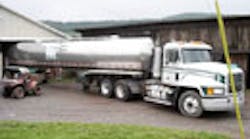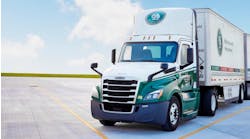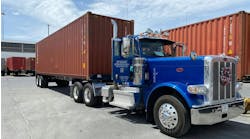For many in trucking, EPA’s SmartWay is becoming a fact of life. But dairy fleets, which can run the gamut from single-truck operations to thousands of vehicles, represent just a small portion of SmartWay fleets. That is beginning to change, however.
The E-Smart (Environmentally Sustainable Methods for Achieving Responsible Transportation) initiative launched by Innovation Center for U.S. Dairy has become a clearinghouse of sorts for dairy fleets of all sizes to gather information about SmartWay and other best practices to make their operations more environmentally sound.
“The overall character and purpose of E-Smart was to encourage dairy fleets to [participate] in SmartWay,” David Crowley, senior environmental health & safety director of HP Hood, told Fleet Owner.
The E-Smart project brings together transportation experts to develop dairy-specific transportation guidelines to cut the industry’s transportation carbon dioxide emissions by 165,000 metric tons annually, potentially saving 16.5 million gallons of diesel fuel. At an assumed cost of $3.50 per gallon, this savings is equivalent to $57.7 million.
Crowley, whose company was one of the founding members of the E-Smart program in 2008, said the organization was formed to find more fuel-efficient and environmentally sustainable practices for dairy fleets. The group quickly decided SmartWay offered the resources and information it was trying to implement, so the focus shifted to education and communication to other dairy fleets in the U.S.
“[E-Smart] is a very robust website that includes all the best practices and those are available to anyone in the dairy industry,” Crowley said. E-Smart grew out of the Innovation Center, which was created by the Dairy Management Inc. (DMI). It uses webinars, conference calls and other communication methods to inform fleets of what can benefit them as well as the ways to use these technologies.
“Creating a more sustainable dairy supply chain significantly benefits everyone from dairy farmers to American families that enjoy dairy products,” said Jim Mulvenna, Ruan Transport Corp.’s vp & gm of West Coast operations and a co-chair of E-Smart. “As an E-Smart leader, Ruan will create and implement responsible model procedures that other trucking companies can also adapt to achieve greater sustainability and fuel efficiency.”
Among the items the program suggests is electronic onboard recorders (EOBRs). But, rather than just suggesting their use, E-Smart will hold webinars to teach management professionals how to utilize them to their full benefit.
What the organization found was SmartWay offered best practices, but there were no specific guidelines for dairy fleets. EPA is working on a project it dubs SmartWay 2.0. Part of that may be the inclusion of Class 7 and other medium-duty models as SmartWay-certified vehicles.
Transportation and distribution account for 3% of fluid milk’s greenhouse gas footprint, according to DMI.
“There are many significant dairy-specific fuel efficiency opportunities for transportation and distribution,” a company spokesperson said. “Applying retrofits to existing trucks can reduce each truck’s fuel consumption by more than 8% while driving, and up to 60% while idling. Behavioral changes on the part of the drivers have the potential to improve fuel efficiency by 5% to 25%.”
Crowley added that the E-Smart program expresses the view that dairy fleets of all sizes can benefit from programs, grants and other initiatives available today. Among those are speed governors, EOBRs, using curtains which help maintain temperatures inside trailers, safe driving practices, and automatic idle shutdown systems.
“This is something that can benefit small and large fleets,” he said, pointing out the cost of an individual idle shutdown system is not prohibitive, even for small fleets.
In fact, the Dairy Farmers of America (DFA) Mountain Area is one organization that has seen great benefit from the use of electronic fleet management systems.
DFA is a cooperative of nearly 18,000 farmers in 48 states. The Mountain Area division operates a fleet of 150 trucks, transporting milk from an eight state region across the country. In 2007, DFA Mountain Area installed a Zonar Systems management system which included a GPS-based inspection, tracking and management tool.
Among the data points returned to the fleet’s management is fuel consumption, route information, inspection data and driver speeds. The system has provided DFA Mountain Area with a reduction in diesel fuel usage of 24,000 gallons in the first quarter of 2008 alone. In addition, it reduced idling costs from $17,000/month to just $2,500 per month – a cut of 85%.
The fuel savings alone equates to a savings of 377,000 gals. a year, resulting in a six-month payback period. The corresponding annual greenhouse gas emissions reduction is 949 metric tons of CO2, equivalent to taking 173 passenger vehicles off the road.
While large fleets have taken advantage of these steps for several years now, the vocational world of dairy fleets, which includes so many small operators, is now benefiting from the HP Hood’s and Ruan Transports of the world, who are pushing hard for programs such as E-Smart.
“I’m a safety professional and in the safety world, there are no barriers to sharing safety benefits,” Crowley said. “The Innovation Center for U.S. Dairy has been successful in ensuring the sharing [of information] without regards to competitiveness. … It’s all shared with the common interests of mankind.”



